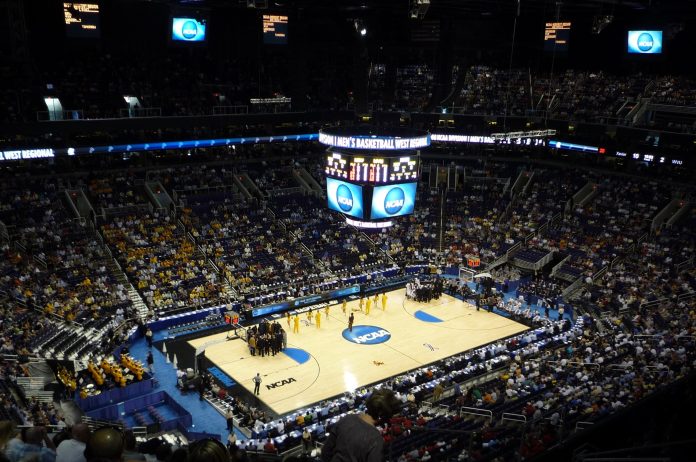
I made two brackets this year for the Men’s NCAA Basketball Tournament, March Madness. While I prefer to watch the NBA, NFL and College Football over College Basketball, I would still say I have extensive knowledge of its best programs, top NBA prospects and experienced upperclassmen from past years. While these things don’t always help in March Madness—hence the “madness”---they do give you some situational understanding of how to fill out the tournament bracket of 64 unique teams as optimally as possible. However, in a single elimination tournament with this many teams, unpredictable results are bound to happen.
I joined a nine-person bracket challenge with eight other people, none of whom know much about college basketball, so to level things, I made a second bracket with riskier predictions than my previous one. As of 3/24, I am in last place in the group by a significant margin despite six out of my elite eight teams still being around and all of my final four remaining intact.
I studied the other brackets in my league to see where I went wrong with my picks. The answer? This is not the year of Cinderella. Brackets that made safe picks, where the higher seeds advance, are seeing much greater success than in past years, as March Madness has been disappointingly predictable this year.
The NCAA Men’s Tournament is known for its unpredictability. Year after year, dominant teams across college basketball are taken down by underdogs, and “Cinderella Runs” see these programs go deeper into the tournament than anyone anticipated. In 2023, tourney favorite Purdue was beaten by 16th-seeded Fairleigh Dickinson in the first round. In 2021, 15th-seeded Oral Roberts went to the third round after beating second-seeded Ohio State, seventh-seeded Florida, and narrowly losing to Arkansas by just two points. San Diego State University and Florida Atlantic University each made a final four trip in 2023 as the fifth and ninth seeds of their respective regions. These bracket busting games are what make the tournament exciting. As a result, many college basketball experts like to go against the grain to correctly predict the best underdog performers, just as I did in my own bracket.
This year, there were no trademark upsets or bracket busting games in the first two rounds. Every top four seed of their respective region made it to the second round, a shock compared to usual tradition. This is a more common occurrence in Women’s Basketball, where dominant programs regularly coast through the tournament until their challenges come in late rounds. The lack of upsets raises questions about the changing nature of men’s college basketball, which I believe stems from the effects of NIL and the transfer portal on the sport.
NIL, which stands for Name, Image and Likeness, essentially allows college athletes to benefit monetarily through these three things. This allows them to receive endorsements and deals from schools. It came into effect in 2021, reshaping the college sports world of today. Players who want to chase new opportunities can then enter the transfer portal, which allows them to field offers from other programs and transfer to a new school.
Since NIL’s legalization, many college athletes have transferred schools in order to chase a better financial situation for themselves. For many athletes from smaller programs, bettering their financial situations often involves transferring to a more powerful program, where their services may be a valuable asset to a better team in a more challenging conference and, so far, we’ve seen quite a bit of this. Meanwhile, there are instances of players leaving their program after receiving insufficient opportunities and roles or underwhelming results.
The top college basketball programs have long been stacked, even without the transfer portal. Teams like Kentucky, Duke, North Carolina and UCLA are always going to be attractive programs, even if they have weaker spells. Sometimes, hungry colleges look for players who will transfer to a weaker school and get a larger opportunity, such as Coleman Hawkins, who transferred from the successful Illinois to Kansas State to have a team where he could be the star, only to fail. The combination of funneling players from small programs to top ones and moving polished players to desperate and unsuccessful schools changes the balance of power, where disparities between the top teams and the ones after become larger.
This may explain why every top team was able to stay on their feet this year. While upset watch is still very real, many heroes of a small school’s surprising March Madness run are no longer incentivized to stay with their programs because of the greener pastures elsewhere. While top teams might lose a player to the portal that wants another opportunity, top programs usually have their pick of the litter when it comes to incoming freshmen and other transfers that will allow them to fill in the gap easily. Meanwhile, those smaller schools that do have a breakout year often can’t keep their core intact, like how St. Peters lost their best players after their Cinderella run in 2022.
Of course, there’s not enough of a sample size to say this is true. March Madness has had plenty of upsets in the 2020’s, and this lack of upsets in the first round has only just occurred. However, after studying the brackets off the past couple of years, there’s a noticeable trend, where these upsets are on a downward slope. But if the current pattern holds, the longer NIL and the transfer portal influence rosters, the more they may tilt the scales in favor of big name programs, hurting the likelihood of the exciting upsets that March Madness is known for.


